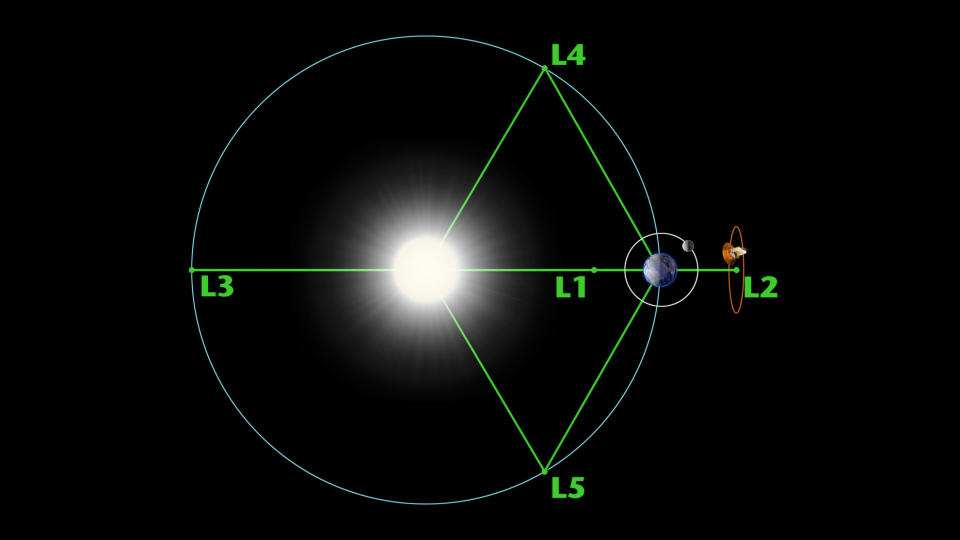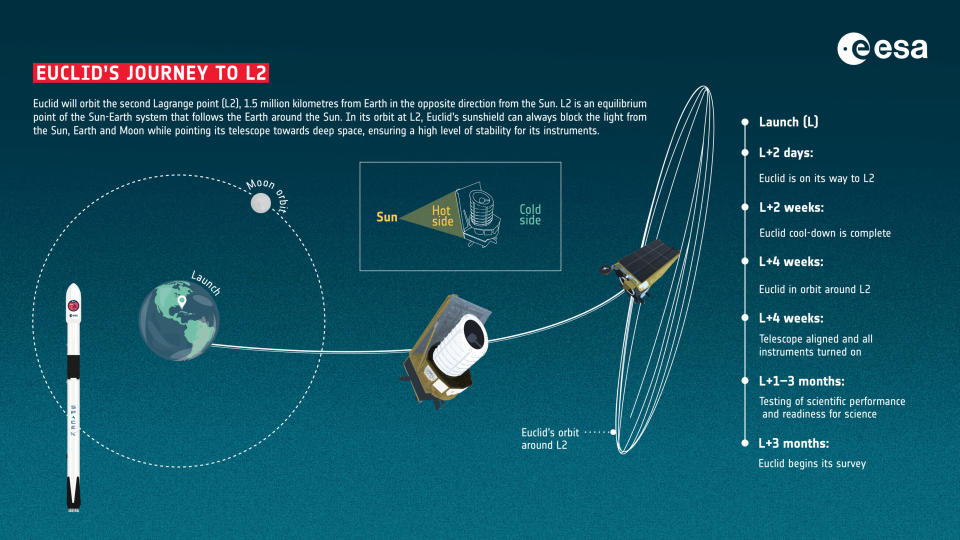Europe's Euclid mission launches to unveil the 'dark universe'

*The ESA's Euclid Telescope lifts off from Kennedy Space Center atop a SpaceX Falcon 9 rocket, on Saturday, July 1, 2023, bound for Lagrange Point 2. Credit: NASA*
A new telescope has just launched into space that will 'shed light' onto the unseen universe of dark matter and dark energy.
There are two grand mysteries of the universe that currently occupy the thoughts of astronomers and astrophysicists.
From what we can see with our telescopes, galaxies behave very strangely. How they rotate, how they interact with each other, and how their gravity bends light, they appear to have far more 'stuff' in them than just with stars, gas, and dust we can detect. Point any kind of telescope you want out into the universe, from gamma ray down to radio, and there's just no way to account for the extra mass these galaxies (including our own) appear to contain. Scientists call this unseen, unaccounted-for portion dark matter.
On an even larger scale, our universe is growing, with galaxies getting farther apart from each other as time goes on. The strange part is that the expansion of the universe is speeding up, but there isn't anything we can see or detect driving this acceleration. The reason for it is currently called dark energy.
On Saturday, July 1, 2023, a new telescope launched into space that may help us figure out the mysteries behind dark matter and dark energy. The European Space Agency's Euclid mission was boosted into orbit by a SpaceX Falcon 9 rocket, and is now making the journey out to Lagrange Point 2, roughly 1.5 million kilometres 'behind' Earth (as viewed from the Sun).

This artist's conception drawing shows the ESA Euclid telescope in space. Credit: NASA/ESA, CC BY-SA 3.0 IGO
According to the ESA:
Euclid will observe billions of galaxies out to 10 billion light-years to create the largest, most accurate 3D map of the Universe, with the third dimension representing time itself. This detailed chart of the shape, position and movement of galaxies will reveal how matter is distributed across immense distances and how the expansion of the Universe has evolved over cosmic history, enabling astronomers to infer the properties of dark energy and dark matter. This will help theorists to improve our understanding of the role of gravity and pin down the nature of these enigmatic entities.
"Today we celebrate the successful launch of a ground-breaking mission that places Europe at the forefront of cosmological studies," Carole Mundell, ESA's Director of Science, said on Saturday. "If we want to understand the Universe we live in, we need to uncover the nature of dark matter and dark energy and understand the role they played in shaping our cosmos. To address these fundamental questions, Euclid will deliver the most detailed map of the extra-galactic sky. This inestimable wealth of data will also enable the scientific community to investigate many other aspects of astronomy, for many years to come."
A 3-month wait
Very similar to what happened with the James Webb Space Telescope, Euclid is now on a journey beyond Earth's orbit, out to Lagrange Point 2 (L2). a 'stable' point in space, produced by the gravity of Earth, the Moon and the Sun.

This diagram shows an idealized view of the five Lagrange Points produced by the gravity of the Sun, Earth and Moon. A telescope is shown orbiting around Lagrange Point 2 (L2). The diagram is not to scale. Credit: NASA/WMAP Science Team
"L2 is ideal for astronomy because a spacecraft is close enough to readily communicate with Earth, can keep Sun, Earth and Moon behind the spacecraft for solar power and (with appropriate shielding) provides a clear view of deep space for our telescopes," says NASA.

This diagram details the timeline of Euclid's journey to L2 and the weeks of testing required before it begins collecting science on the dark universe. Credit: ESA (CC BY-SA 3.0 IGO)
According to the ESA, it should take Euclid four weeks to reach L2. On the journey, the telescope will cool down so that its mirrors can provide the sharpest picture of the cosmos (like JWST did). Once at L2, the spacecraft will then turn on its instruments and align the telescope, and begin a two-month long process of testing to ensure that it can do its job.
After all that, roughly three months from now, Euclid can then begin mapping the unseen cosmos.

